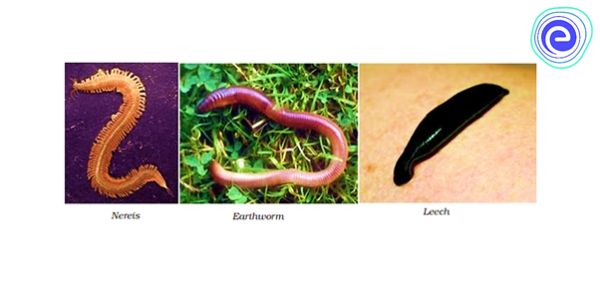Phylum Annelida
Phylum Annelida contains around 17000 species. Ringworms and segmented worms are other names for annelids. They can be found in a variety of habitats, including coastal waterways, freshwater, and wet terrestrial places. The annelids can be as small as a few centimeters long or as large as three meters. In addition, some species in this phylum have unusual forms and vibrant colors. Annelids are invertebrate creatures with bilateral symmetry. They are triploblastic and coelomate. Their body surface is divided by segments called metameres. They have longitudinal and circular muscles that let them move around. Nereis and other aquatic annelids have lateral appendages called parapodia that aid in swimming.There is a closed circulatory system in place. Osmoregulation and excretion are aided by nephridia (sing. nephridium). The neural system is made up of paired ganglia (sing. ganglion) coupled to a double ventral nerve cord via lateral nerves. Earthworms and leeches are monoecious, but Nereis, an aquatic variety, is dioecious. Sexual reproduction is prevalent. Nereis,Pheretima (Earthworm), and Hirudinaria are other examples (Bloodsucking leech).


 ACME SMART PUBLICATION
ACME SMART PUBLICATION
